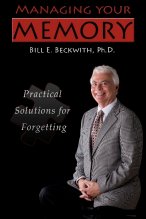Hospital Acquired Delirium Increases the Rate of Cognitive Decline
Last July I discussed the differences between delirium and dementia. To review, by the dictionary a delirium is “an acute mental disturbance characterized by confused thinking and disrupted attention usually accompanied by disordered speech and hallucinations.” By the same dictionary dementia is “usually progressive condition marked by deteriorated cognitive functioning with emotional apathy.” The critical thing to know is that a delirium has a sudden onset and is reversible in time. A dementia often has a gradual onset and is irreversible.
A new study (Archives of Internal Medicine, 2012, August 20 online) demonstrated that there are enduring effects of hospital-acquired delirium in patients with Alzheimer’s disease. The rate of decline is about two times faster in those who developed an in-hospital delirium when compared to those who do not. Delirium is thought of as a transient condition that clears and returns affected persons to their baseline level of cognition. These researchers followed patients with Alzheimer’s disease for 5 years after hospitalization. Those who developed delirium declined more quickly. The delirium may be transient but the risk for more rapid decline is not.
The effects of delirium have also been seen in surgical and intensive care patients whether demented or not. The authors of the study suggest that delirium should be handled as a medical emergency. Hospital staffs need to be better trained to recognize delirium so they can be proactive rather than reactive (reach for tranquilizes). Current estimates are that 56% of hospitalized Alzheimer’s patients will develop a delirium but fewer than 30% of the deliriums are recognized. We need to do better.
Early identification of delirium and interventions with high-risk patients is essential to better care. There are several non-pharmacological treatments that may help. These interventions include reorientation (to time, place, and reason for hospitalization), therapeutic activities (PT, OT, and stimulation), early mobility (get them moving as soon as it is safe), exposure to direct light rather than darkness, presence of familiar people/objects (e.g., family, pictures, reassuring videos), and hydration.
We should not sit back and wait for delirium to set in. Rather we need to develop protocols for assessment and implementation of interventions that reduce or prevent delirium. Treatment is best when it removes offending medications and focuses on environmental modifications. Finally, include family. They often do not understand what is happening and need support so they can better manage their emotions in a difficult and stressful time. Family modeling calmness is essential to better outcome.




